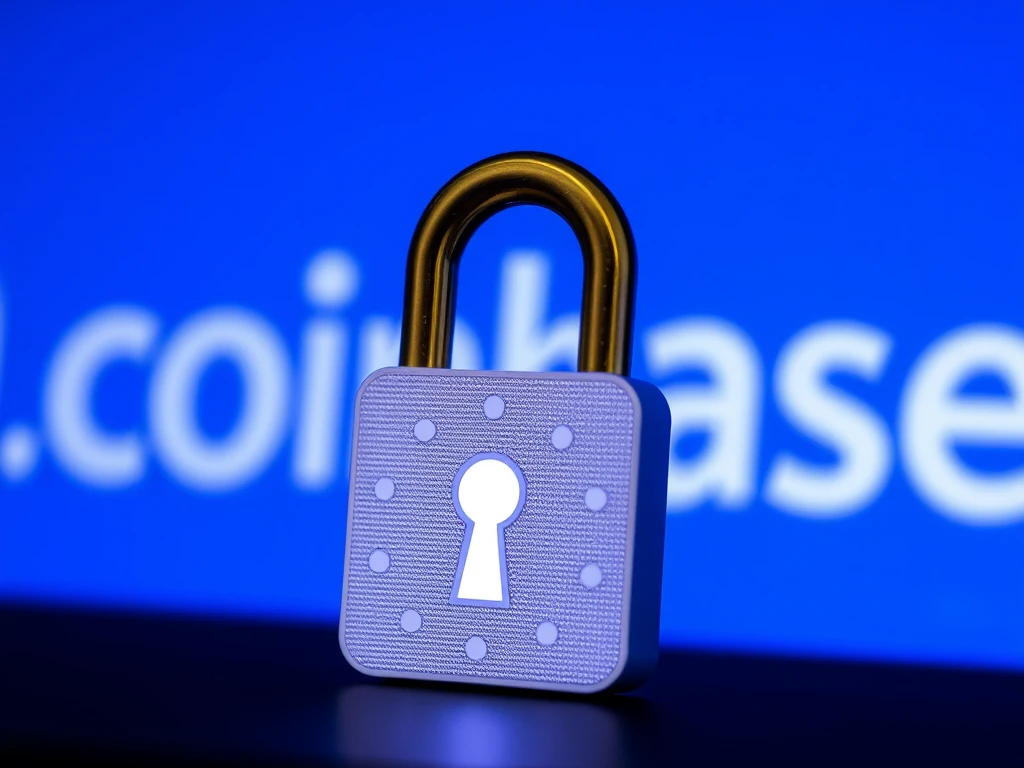Urgent Warning: $46M Crypto Phishing Scam Devastates Coinbase Users

Hold onto your hats, crypto enthusiasts! A chilling report has surfaced revealing a staggering $46 million loss suffered by Coinbase users due to suspected phishing scams in March alone. This alarming news, brought to light by blockchain investigator ZachXBT, underscores the ever-present danger lurking in the crypto space, especially as prices surge and attract nefarious actors. Are your digital assets safe? Let’s dive into this developing story and uncover how you can shield yourself from these sophisticated cyber threats.
Unmasking the Coinbase Phishing Scams: A $46 Million Crypto Heist
The crypto world is buzzing with concern as reports of Coinbase phishing scams escalate. According to blockchain sleuth ZachXBT, users of the popular cryptocurrency exchange Coinbase may have been drained of a colossal $46 million in Bitcoin within just two weeks in March. This jaw-dropping figure highlights the aggressive tactics employed by scammers exploiting the rising tide of crypto interest. These scams, often taking the form of address poisoning and wallet spoofing, prey on user error, subtly tricking victims into diverting their precious crypto holdings to fraudulent addresses meticulously crafted to mimic legitimate ones. Imagine losing your hard-earned crypto in a blink – this is the harsh reality facing many in the digital asset realm.
Crypto Scams Evolve: Address Poisoning and Wallet Spoofing Explained
The methods behind these crypto scams are becoming increasingly sophisticated. Let’s break down two common techniques:
- Address Poisoning: Scammers send small transactions to your wallet using addresses that are very similar to your own or addresses you frequently use. The goal? To have you accidentally copy their malicious address when making a future transaction, thinking it’s one of your regular recipients.
- Wallet Spoofing: This involves creating fake wallet interfaces or browser extensions that look identical to legitimate ones. Unsuspecting users might enter their private keys or seed phrases into these fake platforms, granting scammers complete access to their funds.
ZachXBT’s investigation revealed multiple Coinbase-linked wallets targeted this month. A particularly alarming instance involved a suspected 400 Bitcoin (BTC) theft from a single wallet, as evidenced by a Blockchair screenshot. “It is suspected a Coinbase user was scammed yesterday for $34.9M (400.099 BTC),” ZachXBT posted on Telegram. The investigator further noted the discovery of “multiple other suspected thefts from Coinbase users in the past two weeks bringing the total stolen this month to $46M+.” This paints a grim picture of the scale and impact of these phishing scams.
Phishing Scams: Impersonation is the Weapon of Choice
Scammers are masters of disguise, and in the digital world, impersonation is their most potent weapon. They frequently impersonate well-known brands to cultivate a false sense of trust, making victims more susceptible to their schemes. And who are they targeting? According to Mailsuite, US brands are prime targets for impersonation. Within the crypto sphere, Coinbase unfortunately tops the list as the most impersonated brand. However, it’s worth noting that while Coinbase is a target, tech giant Meta faces a staggering 25 times more impersonation attempts, highlighting the pervasive nature of these online scams across various industries. Remember, vigilance is your best defense against these deceptive phishing scams.
Fortify Your Cryptocurrency Security: Actionable Steps for Coinbase Users
Coinbase, acknowledging the severity of the situation, is actively investigating ZachXBT’s claims. Jaclyn Sales, Coinbase’s director of communications, emphasized crucial security measures, stating, “Coinbase will never call you or ask for your login credentials, API key or two-factor authentication codes. We will also never ask you to transfer funds.” She stressed, “If someone contacts you claiming to be from Coinbase and requests this information or asks you to transfer assets, do not do it. It is a scam!”
To proactively enhance your cryptocurrency security and safeguard your assets, Coinbase recommends implementing these essential measures:
- Dedicated Email Account: Use a unique email address solely for your crypto-related activities. This helps isolate potential phishing attempts.
- Two-Factor Authentication (2FA): Enable 2FA on your Coinbase account and all other crypto platforms. This adds an extra layer of security beyond just your password.
- Address Allowlist (Whitelisting): Set up an address allowlist on Coinbase. This feature restricts withdrawals to only pre-approved addresses, preventing unauthorized transfers to scammer wallets.
- Coinbase Vault: Utilize Coinbase Vault for an added layer of security for your Bitcoin and other cryptocurrencies. Vaults introduce time-delayed withdrawals, giving you a window to cancel transactions if you suspect foul play.
History of Bitcoin Theft: Learning from Past Mistakes
This recent $46 million incident isn’t an isolated event. ZachXBT previously reported that over $65 million may have been pilfered from Coinbase users between December 2024 and January 2025 in what he termed “high confidence thefts.” He cautioned that his figures might be underestimates, as they primarily relied on direct messages and on-chain data, excluding unreported cases handled through Coinbase support tickets or police reports. This historical context underscores the persistent and evolving threat of Bitcoin theft and crypto scams targeting even users of established platforms like Coinbase.
Beyond standard phishing, “pig butchering scams” represent another insidious form of crypto fraud. These schemes involve elaborate and prolonged manipulation, building trust with victims over time before ultimately convincing them to invest in fake crypto opportunities, leading to devastating financial losses.
Stay Vigilant, Stay Safe
The alarming $46 million crypto scams targeting Coinbase users serve as a stark reminder of the ever-present dangers in the digital asset landscape. As crypto adoption grows and prices fluctuate, so too does the ingenuity of cybercriminals. Protecting your cryptocurrency requires constant vigilance, proactive security measures, and a healthy dose of skepticism. By staying informed, implementing robust security practices, and being wary of unsolicited communications, you can significantly reduce your risk and navigate the crypto world with greater confidence. Don’t become the next victim – prioritize your crypto security today!









